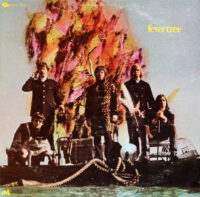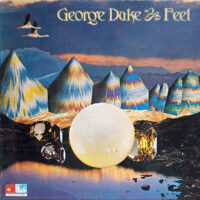
Here’s a minor rock classic that’s often sitting in plain view in used bins for very reasonable prices. Do not pass it by. These one-hit wonders from Houston, Texas worked some serious magic on this potent, covers-heavy period piece from 1968. It’s their debut, and the quintet captured the proverbial lightning in a bottle, never to match its fire and verve on three subsequent albums. If Fever Tree Had stopped after this self-titled heater, they’d be part of the distinguished one-and-done club (McDonald & Giles, Skip Spence, the United States Of America, Friendsound, et al.). But alas…
Weirdly for a rock full-length ca. 1968, its producers—Scott and Vivian Holtzman—wrote most of the songs. Thankfully, they were on a creative roll back then, crafting baroque psych-folk and storming garage-rock numbers that have aged well while also epitomizing a late-’60s vibe of overflowing love and optimism. It helped that Dennis Keller sang like Jim Morrison with greater lung power, and minus the preening poetic gravitas. (I like Jimbo, so calm down, Doors fans.)
It took guts for Fever Tree to start their first album with “Imitation Situation 1 (Toccato And Fugue),” a momentous fanfare mashing up J.S. Bach and Ennio Morricone, with horns and string supplied by the illustrious Gene Page and David Angel. That brief piece non-sequiturs into “Where Do You Go?”—heavily fuzzed garage rock laced with Rob Landes’ flute and bolstered by E.E. Wolfe III’s bulbous bass line. Keller asserts himself as a primal force of nature on the mic, well up to the challenge of cutting through the thicket of Michael Knust’s keening, snaky guitar lines. The minor hit (#91!) “San Francisco Girls (Return Of The Native)” perfectly encapsulates late-’60s American psychedelia—full of thrilling surges and gorgeous lulls, a kaleidoscopic roller-coaster ride to the center of your blown mind.
Fans of Madvillain will recognize “Ninety-Nine And A Half,” as the hip-hop supergroup sampled it on “America’s Most Blunted.” It opens with a Keller wail that rivals anything Janis Joplin and Roky Erickson yelped in their heydays, as Fever Tree imbue this Southern-fried soul classic by Steve Cropper and Wilson Pickett with zeal and funk (shout out to drummer John Tuttle). The staccato “Man Who Paints The Pictures” marauds with a killer instinct, like Deep Purple if they were composed of Hell’s Angels—savage yet finessed.
As for the other two high-profile cover versions, there’s a lush take on Neil Young’s touching 1966 Buffalo Springfield ballad, “Nowadays Clancy Can’t Even Sing,” and an ingenious, girthy interpretation of two mid-period Beatles stunners, “Day Tripper” and “We Can Work It Out,” with baroque interpolations of “Eleanor Rigby” and “Norwegian Wood.” Wowow. Of the album’s four remaining ballads, “The Sun Also Rises” is by far the best. This orchestral-pop gem towers as grandiosely and beautifully as peak Left Banke and is low-key Fever Tree‘s highlight. -Buckley Mayfield
Located in Seattle’s Fremont neighborhood, Jive Time is always looking to buy your unwanted records (provided they are in good condition) or offer credit for trade. We also buy record collections.













